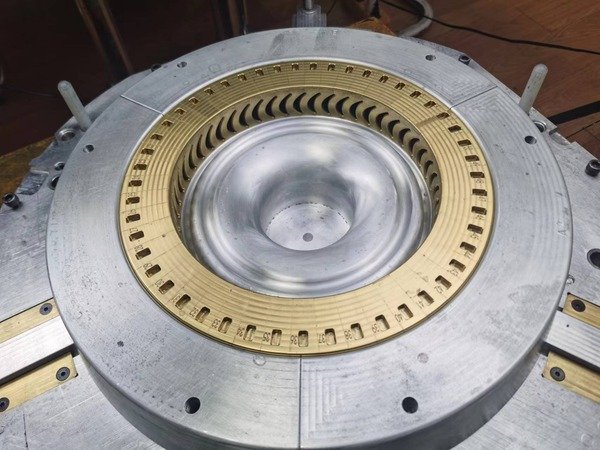The Environmental Impact of Lost Wax Casting Supplies: What Should You Consider
Introduction
Welcome to the world of lost wax casting, an ancient art form that has evolved over centuries, yet remains as relevant today as ever. At PrecisionVast, we’re not just experts in the craft; we’re also deeply aware of the environmental responsibilities that come with it. Lost wax casting, known for its intricate detail and precision, involves a range of supplies – from waxes to investment materials and furnaces, each carrying its own environmental footprint.
In today’s eco-conscious world, it’s crucial to understand the environmental impact of these supplies. From the biodegradability of waxes to the energy efficiency of furnaces, every aspect of the casting process contributes to its overall environmental footprint. As we dive into this journey, it’s important to recognize that our choices in materials and methods have implications not just for the quality of our final products, but also for the world we live in.
In this exploration, we aim to shed light on the environmental concerns associated with lost wax casting supplies. We will delve into the sustainable practices that can be adopted, balancing the art of casting with the art of preserving our planet. Join us as we navigate through the intricate interplay of artistry and environmental stewardship in the realm of lost wax casting.
Section 1: The Environmental Footprint of Waxes
In the realm of lost wax casting, waxes are more than mere tools; they are the soul of the craft. At PrecisionVast, we acknowledge that while waxes are indispensable, they also carry an environmental footprint that cannot be ignored. Understanding the types of waxes used and their environmental implications is crucial in our journey towards more sustainable practices.
Typically, lost wax casting employs various waxes, including paraffin, beeswax, and synthetic waxes. Paraffin wax, derived from petroleum, is widely used for its ease of shaping and consistency. However, its environmental impact, due to its non-renewable origin and difficulty in biodegradation, raises concerns. Beeswax, a natural and renewable option, offers a more eco-friendly alternative, though its higher cost and limited availability can be challenging.
The question of biodegradability and toxicity is central to the environmental discussion around waxes. Synthetic waxes, while offering versatility and uniformity, often contain chemicals that can be harmful to the environment when not disposed of properly. The residue from these waxes can persist in the ecosystem, affecting soil and water quality.
At PrecisionVast, we recommend exploring eco-friendly wax alternatives that minimize environmental impact. Options like soy and palm waxes, although not without their trade-offs, offer a more sustainable choice with lower toxicity and better biodegradability. When it comes to disposal, proper methods such as recycling or specialized waste management can mitigate the adverse effects on the environment.
Adopting eco-friendly waxes and responsible disposal methods is not just a choice but a commitment to the environment. It’s about aligning our passion for casting with our responsibility towards the planet, ensuring that the art of lost wax casting leaves a positive legacy for future generations.
Section 2: Investment Materials and Sustainability
In the meticulous world of lost wax casting, investment materials are pivotal in shaping the final product. However, their environmental impact is a growing concern that PrecisionVast takes seriously. The conventional investment materials, primarily gypsum-based, pose environmental challenges due to their energy-intensive manufacturing process and disposal issues.
The production of these materials often involves significant energy consumption, leading to a substantial carbon footprint. Moreover, once used, these materials can be challenging to dispose of responsibly. They typically end up in landfills, where they contribute to the growing problem of waste accumulation and potential chemical leeching.
Recognizing these environmental impacts, PrecisionVast advocates exploring sustainable alternatives. One promising direction is the use of eco-friendly investment materials made from renewable resources or those with lower energy requirements for production. These alternatives not only reduce the carbon footprint but also offer improved disposal options, such as biodegradability or recycling potential.
Disposing of used investment materials responsibly is as crucial as selecting the right type. Best practices include identifying recycling facilities that accept spent investment materials or using methods that reduce their environmental impact. In cases where recycling isn’t feasible, proper waste management protocols should be followed to minimize ecological harm.
Adopting sustainable practices in the selection and disposal of investment materials is a step towards a more environmentally responsible lost wax casting process. At PrecisionVast, we are committed to not just mastering the art of casting, but also ensuring that it harmonizes with our environmental stewardship. Embracing sustainability in investment materials is an essential part of this commitment, paving the way for a greener future in casting.
Section 3: Crucibles, Furnaces, and Energy Consumption
In the intricate dance of lost wax casting, the role of crucibles and furnaces is undeniably central. But as experts at PrecisionVast, we’re acutely aware of their environmental impact, particularly in terms of energy consumption. Let’s delve into how these essential tools can be aligned with environmental responsibility.
Furnaces, the beating heart of the casting process, vary greatly in their energy efficiency. Traditional gas-fired furnaces, while common, can be significant energy consumers. On the other hand, electric furnaces, particularly those with modern insulation and temperature control systems, offer enhanced energy efficiency. It’s akin to comparing an old gas guzzler with a modern electric vehicle – the latter is a leap forward in energy conservation.

The choice of crucible material also plays a pivotal role in environmental impact. Materials like silicon carbide and graphite, known for their durability and heat resistance, can reduce the frequency of crucible replacement, thereby diminishing the ecological footprint. It’s similar to choosing a reusable water bottle over disposable plastic ones – a small decision with a lasting impact.

Minimizing energy consumption in the casting process is not just about selecting the right furnace and crucible; it’s also about optimizing the entire casting workflow. Implementing energy-efficient practices like proper insulation, regulating furnace temperatures, and utilizing energy-saving casting techniques can significantly reduce overall energy usage. It’s much like a symphony – every element needs to be in harmony for the most efficient performance.
At PrecisionVast, we advocate for an environmentally conscious approach to lost wax casting. By carefully considering the energy efficiency of furnaces, the sustainability of crucible materials, and adopting energy-saving practices, we can significantly reduce the environmental footprint of our craft, ensuring a greener future for the casting industry.
Section 4: Addressing Waste Management in Lost Wax Casting
In the specialized field of lost wax casting, waste management presents unique challenges, but also opportunities for sustainable practices. At PrecisionVast, we’re committed to addressing these challenges head-on, recognizing the critical role of responsible waste management in reducing the environmental impact of our industry.
One of the primary challenges in lost wax casting is dealing with the waste generated from used waxes and investment materials. These materials can be difficult to recycle due to contamination with metals and other substances during the casting process. However, innovative solutions are emerging. For instance, certain types of investment materials can be chemically treated and reused, reducing the need for new materials and minimizing waste.
Recycling plays a vital role in mitigating the environmental footprint of lost wax casting. For example, metal scraps and sprues from the casting process can be melted down and reused, effectively closing the loop in the metal use cycle. This not only conserves resources but also significantly reduces waste.
In recent years, there have been encouraging case studies within the industry that demonstrate successful sustainable practices. Companies are implementing closed-loop systems where waste materials are recycled and reintegrated into the production cycle. Others are investing in advanced filtration systems to minimize the environmental impact of waste disposal.
At PrecisionVast, we believe that adopting these sustainable practices is not just a necessity for environmental stewardship but also a smart business strategy. By embracing innovative recycling techniques and efficient waste management systems, we can significantly reduce our ecological footprint while maintaining the high quality of our lost wax casting products. It’s a win-win for the environment and the industry.
Conclusion
In conclusion, as we navigate the complexities of lost wax casting, it’s imperative to recognize our environmental responsibilities. At PrecisionVast, we emphasize that reducing the environmental impact of casting supplies is not just a necessity but a commitment to future generations. We encourage the industry to shift towards sustainable practices, from choosing eco-friendly waxes and investment materials to implementing efficient waste management systems. Embracing these changes is crucial for the longevity of both our craft and our planet. Let’s continue to cast not just with skill and precision, but with an unwavering dedication to environmental stewardship.





